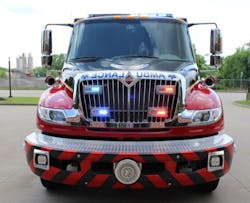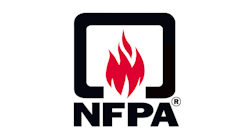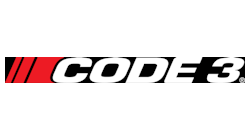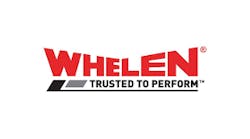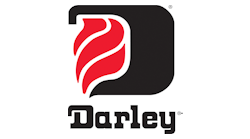High-Tech Electronics in Apparatus Warning Light Components
Warning lights are a huge part of the fire apparatus purchasing process and have been since the advent of motorized emergency vehicles. They’ve evolved from primitive kerosene-fueled side lights to sealed-beam and incandescent bulbs to high-intensity strobe lights, to quartz halogen to high-tech light-emitting diodes (LEDs) controlled and sequenced by computer programs.
They all have the same things in common, and that is to request the right of way while the apparatus are in motion and to mark parked vehicles that may obstruct passage.
And, increasingly, LED has become the illumination of choice. It’s almost to the point that the only kind of warning light available includes LEDs.
“Everyone has been going in the LED direction,” said Matt Pitzer, director of OEM Markets for Code 3. “For the past six or seven years, pricing and technology has been improving and everyone is loading the trucks up with LEDs.”
Pitzer said fire departments can now take advantage of LEDs for a reasonable price. Some of those advantages are cutting electrical amperage requirements for warning lights in half, which means alternator sizes can be reduced and, in many cases, the need for generators can be eliminated, he said.
LEDs means that Code 3 is able to produce lower profile lights and light bars, bringing them closer to the bodies than older products and, therefore, are less susceptible to hitting tree branches, and other obstructions.
“Having lights nestled up to the body is better,” Pitzer said. “It’s been the focus more and more at Code 3, and other manufacturers, over the years. LED has been the big push over the recent history.”
Derek Zaremba, automotive sales, for Whelen Engineering Company, agrees.
“LEDs have been hot for 10-plus years,” Zaremba said. “The technology has improved every year and we try to continue to improve our products as the technology improves.”
Pitzer said the breakthrough for LEDs happened about 10 years ago when developers figured out a way to power LEDs at lower amperages.
Today, LEDs can produce the same, or more, brightness and intensity than quartz halogen and strobe lights, with significantly less power, Pitzer said.
LEDs are controlled by computers and Pitzer said that Code 3 products can have up to 74 different flash patterns that are programmable by the end user. Pitzer cautioned, however, that firefighters need to be careful when customizing flash patterns and rates to make sure the lights are still compliant with National Fire Protection Association (NFPA) standards for optical warning lights for fire apparatus.
And, for those who still want them, Code 3 continues to make a limited number of quartz halogen warning light systems, although the moving reflectors and motorized lights are gone.
“LEDs are as bright or brighter than quartz halogen,” Pitzer said, noting that red, blue, and white LEDs are very bright and common for use on emergency apparatus.
And, for those who complain that LEDs are perhaps too bright, Pitzer said they LED-based warning lights can be turned down with brightness controls. He added some light bars can be equipped with automatic dimming controls.
The real advantage of LED technology is the “bulb” longevity, Pitzer said. “You can easily get 50,000 hours out of an LED bulb,” Pitzer said. “You could put a light on two more apparatus down the road and they’ll still be going strong.”
LEDs are a little more expensive than quartz halogen-based lights, but the life expectancy for LEDs are up to 2.5 times longer than the older style warning lights, Pitzer said.
But as technology advances, the price is closing in to be nearly the same as the older quartz halogen lights.
Zaremba said his company has been able to develop several new products that use LEDs.
LEDs are the biggest advancement in warning lights since the 80s and 90s when halogen and strobe lights with reflectors were the state of the art. Today, LEDs are used throughout the apparatus from DOT lights to the lower zone lights and light bars, Zaremba said. And all of Whelen’s warning lights are compliant with SAE, KKK ambulance standards, and NFPA standards for apparatus warning lights.
Whelen lenses are “hard coated” with a thin layer of lacquer-like finish, which are resistant to chemicals and ultraviolet (UV) rays, he said.
New products from Whelen include the V-Series lightheads, Zaremba said. V-Series lights use multiple planes of light in one light head, offering 180 degrees of angle warning and white illumination/scene lighting. They also feature hard-coated lenses to minimize environmental damage from sand, sun, salt and road chemicals, he said.
Zaremba said that the best advantage of LEDs are the longevity and reliability. LEDs don’t always equal lower amperage requirements because higher power is needed to drive the amount of given light.
He said LEDs are warranted for five years and can last up to at least 20 years with no maintenance. That’s important to firefighters, especially in departments where apparatus are red-lined and taken out of service because of burned out bulbs.
And just demonstrated and shown in August is Whelen’s ProFocus LED light bar takedown technology that can change a spotlight into a floodlight with 100 percent solid-state technology, Zaremba said.
He said the new product, which is not yet available for purchase, will give fire commanders and responders the flexibility to have a single light bar on a vehicle with floodlight and spotlights built in.
“That’s where the LED technology is going,” he said noting that the new product can be used in a variety of emergency and work situations.
Zaremba said Whelen products also offer low-power photo cells and situational controls that allow the end user to change light intensity and flash patterns.
NFPA has an entire section of its 1901 Standard for Automotive Apparatus standards dedicated to “optical warning devices.” Those who are looking to specify warning lights for their next apparatus would be wise to consult the standard for guidance if they have particular lighting preference. In most cases, however, apparatus makers will follow the standards and departments will receive compliant apparatus upon delivery.
